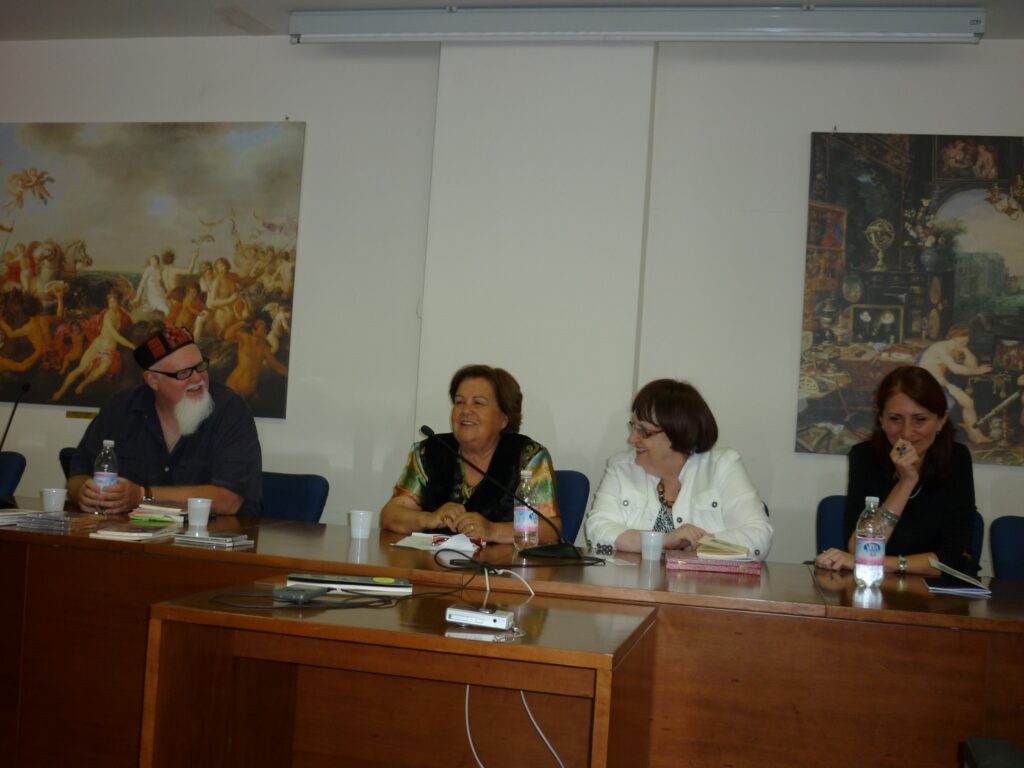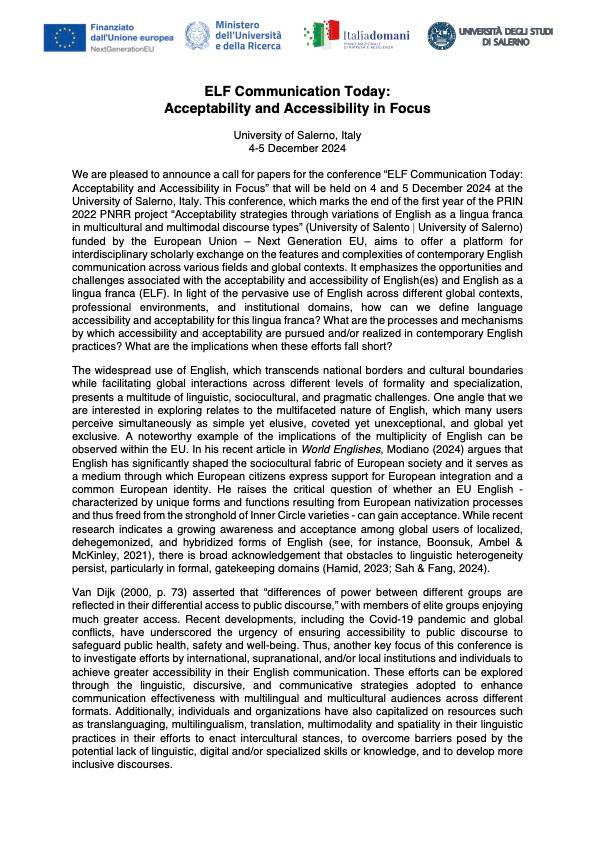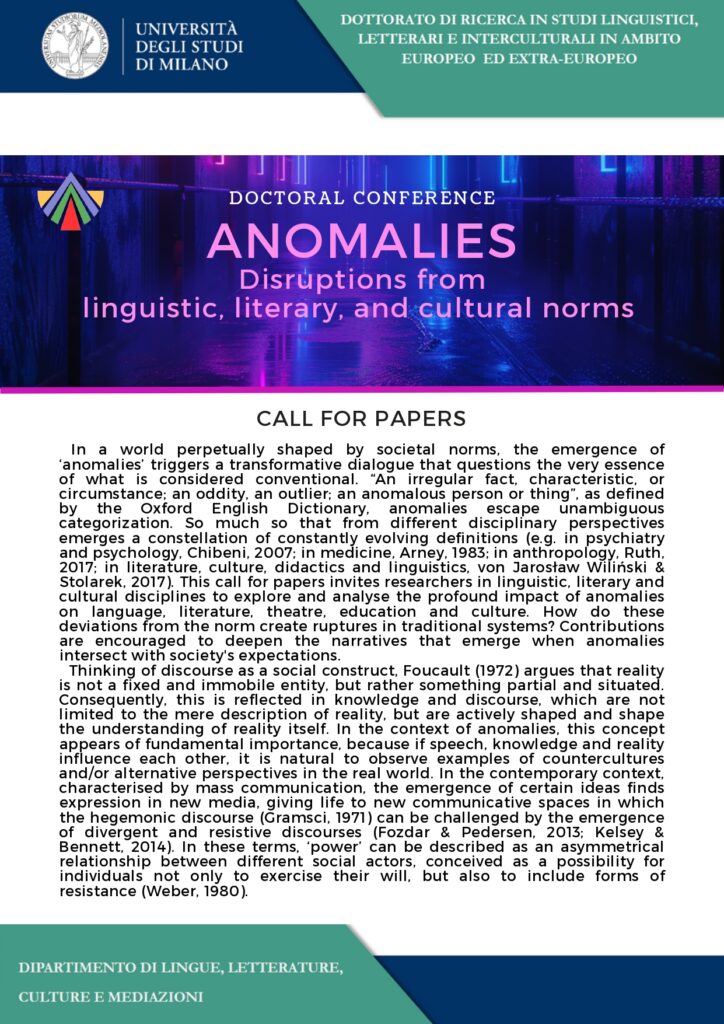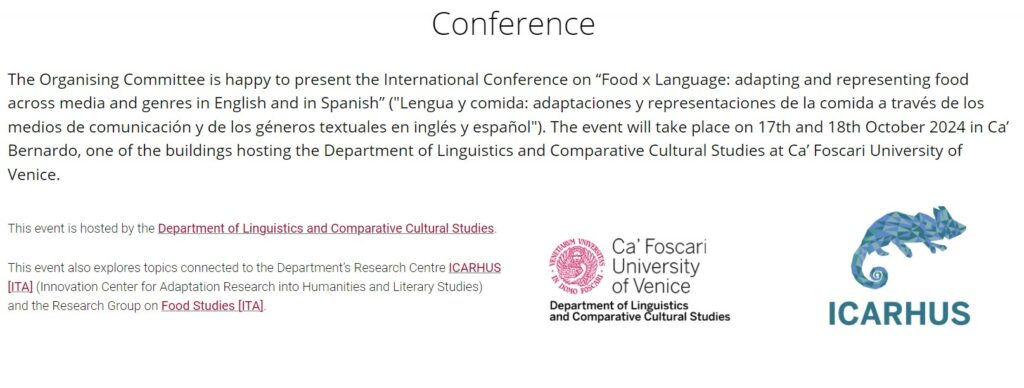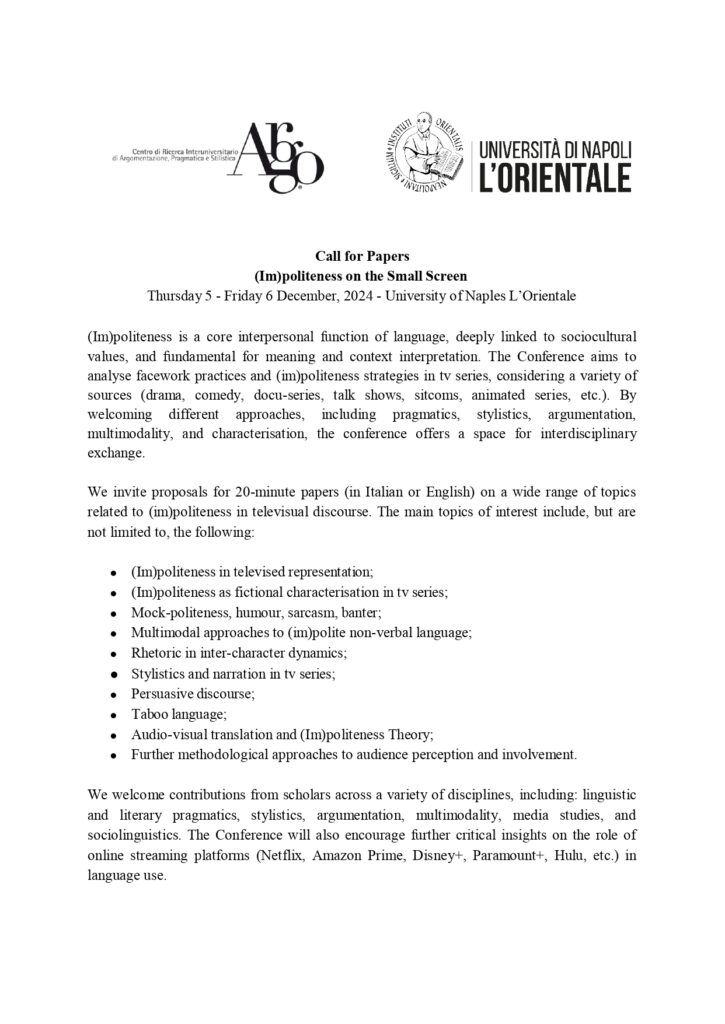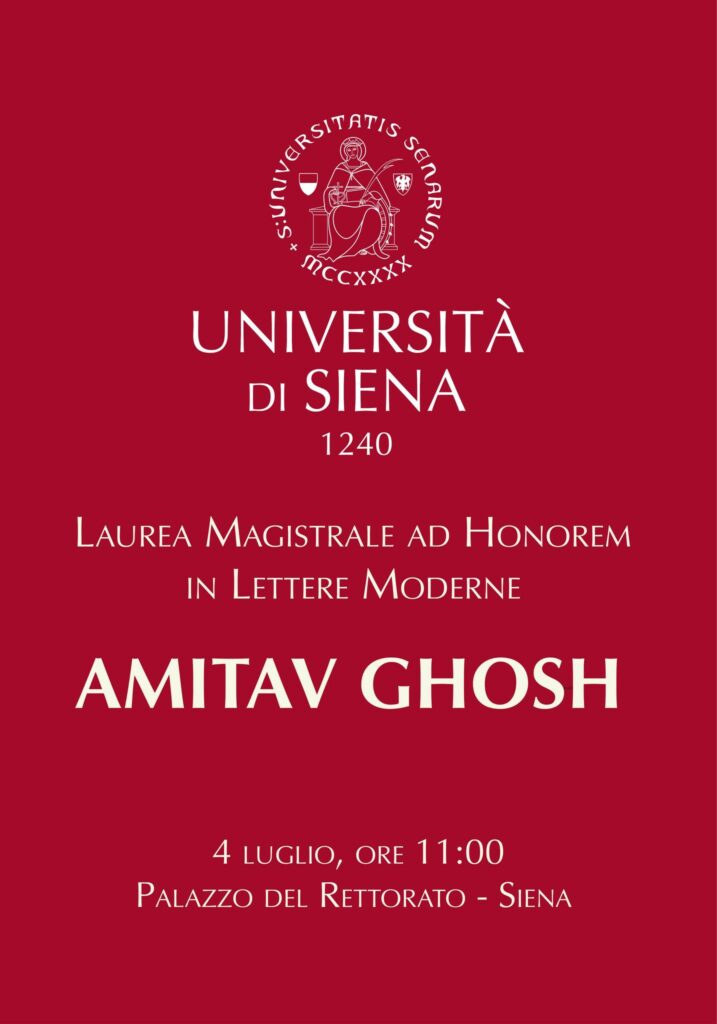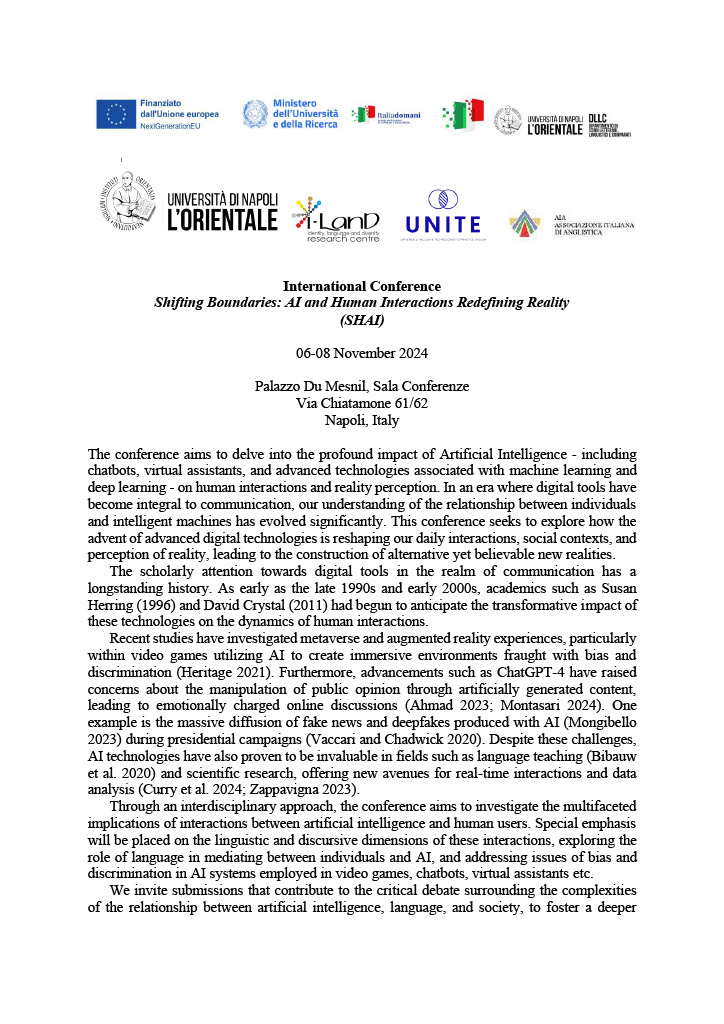“English Language Teaching in Italy (1900-2000). A historical archive of ELT materials at the University of Milan” (20 Settembre 2024)
English Language Teaching in Italy (1900-2000). A historical archive of ELT materials at the University of Milan 20 settembre 2024 Università degli Studi di Milano Via Festa del Perdono 7 Aula 309 L’Italy ELT Archive è un progetto diretto dalla Professoressa Luciana Pedrazzini e dal Professor Andrea Nava presso il Dipartimento di Lingue, Letterature, Culture e Mediazioni dell’Università degli Studi di Milano. Il suo obiettivo è quello di promuovere la ricerca storiografica nel campo dell’insegnamento della lingua inglese in Italia, fornendo a ricercatori, studenti e docenti uno strumento per comprendere i principi linguistici e metodologici sottesi ai materiali didattici per l’apprendimento dell’inglese pubblicati nel contesto italiano del XX Secolo. Il 20 settembre 2024 si terrà una giornata di studi che vedrà riuniti esperti provenienti da diversi ambiti: università, scuola e associazioni di insegnanti. I partecipanti avranno anche la possibilità di prendere parte ad un laboratorio incentrato sulla valutazione e lo sviluppo di materiali didattici utilizzando le risorse presenti nell’Archivio digitale. Programma 9:00 Introduzione e saluti Marco Castellari (Direttore del Dipartimento di Lingue, Letterature, Culture e Mediazioni dell’Università degli Studi di Milano) Monica Barsi (Università degli Studi di Milano/CIRSIL) Andrea Angelone (USR Lombardia) 9:30- 11:30 ELT materials: a historical perspective Richard Smith (University of Warwick): An ELT Archive – how can it be relevant to teaching today? Lucilla Lopriore (Università degli Studi Roma 3/TESOL Italia): Beyond natives: tracing and valuing Italian authors’ contributions to ELT coursebooks and materials in Italy: lessons to be learnt from non-native speakers’ perspectives Gisella Langé (Ministero dell’Istruzione e del Merito): Evolution in language learning, teaching and training in Italian schools Paola Vettorel (Università degli Studi di Verona): Teaching and learning English to communicate: a change of perspective for ELT coursebooks? 11:30-12:00 Pausa 12:00-12:30 Luciana Pedrazzini, Andrea Nava, Martin Ruskov ed Emanuela Tenca (Università degli Studi di Milano): A digital archive of ELT materials in Italy (1900-2000) 12.30-13:30 Tavola rotonda: Il ruolo delle riviste e delle associazioni nell’ambito dell’insegnamento dell’inglese in Italia Modera: Stefania Nuccorini (Università degli Studi Roma 3/CIRSIL) Intervengono: Lucilla Lopriore (Università degli Studi Roma 3/TESOL Italia), Silvia Minardi (LEND), Gianfranco Porcelli (ANILS), Maria Cecilia Rizzardi (Università degli Studi di Milano) 13.30: Conclusioni 14:30-16:00 Workshop Sharon Hartle (Università degli Studi di Verona): ELT methodologies and materials: exploring learning design Modalità di iscrizione L’iscrizione obbligatoria all’evento sarà possibile da lunedì 2 settembre a venerdì 13 settembre 2024. I partecipanti potranno scegliere di iscriversi alle sessioni della mattina e/o al workshop del pomeriggio compilando il modulo dedicato che sarà reso disponibile sul sito www.italy-elt-archive.unimi.it La partecipazione è gratuita ma a numero chiuso (100 posti per la sessione del mattino e 30 posti per il workshop del pomeriggio). Gli iscritti ammessi riceveranno una conferma della loro partecipazione tramite e-mail proveniente dall’indirizzo del progetto italy.elt.archive@gmail.com Ai partecipanti verrà consegnato un attestato di frequenza. L’evento è organizzato con il patrocinio di • AILA Research Network for the History of Language Learning and Teaching – HoLLT • Associazione Italiana di Anglistica – AIA • Centro Interuniversitario di Ricerca sulla Storia degli Insegnamenti Linguistici – CIRSIL • Società Italiana di Didattica delle Lingue e Linguistica Educativa – DILLE • Ufficio Scolastico Regionale per la Lombardia – USR Comitato scientifico: Luciana Pedrazzini, Andrea Nava, Emanuela Tenca e Giovanni Iamartino Per il Comitato organizzativo: italy.elt.archive@gmail.com


